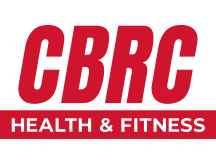Do you remember the days of riding your bike through your neighborhood, with your “bicycle gang” all around you? Do you remember putting baseball cards in your spokes, to hear the clicking as you rode? Do you remember just how fun it was and how free it felt at 12 years old to be able to ride anywhere?
Have you been on a bike since then? Or did you stop riding as soon as you could drive?
Well, since you’re training for a triathlon now, you’d better learn to ride again. In case you forgot, you’ve been training for a triathlon for the last two weeks. You can catch up here and here.
Don’t worry, though. When it comes to starting up again, riding a bike is like – well – riding a bike. You never really forget how. But you do need to train before your race.
The first place you should go is to RPM class, also known as spin. We have plenty of options at CBRC, just check our calendar.
At RPM, you will ride about 10-15 miles per class, and it’s a great way to start your training. Find an instructor who teaches you about good form.
As with all physical activity, proper form is key to avoiding injuries and maximizing your body’s efficiency.
Once you’re comfortable with RPM, go to RPM+. It’s another 15 minutes of leg pumping awesomeness.
Eventually, though, you will need to get a bike. Be sure to get one that fits your body. Any good bike shop will help fit you to the right bike. Many will even let you go out for a ride before making your purchase.
And if this is your first bike in a while, and you’re not sure you’re going to stick with it, look into getting a used bike. They cost less, and often can be just as good as a new one.
A word on bike seats. You will be tempted to buy the big, squishy seat. After all, it must be more comfortable because it can distribute your weight over a larger area.
Don’t buy it. Those seats tend to put all the weight on your soft tissue, which will fatigue quickly, and start to get painful.
Instead, get a harder, smaller seat. It will be more comfortable over longer distances. It focuses your weight on your “sit” bones, which can handle more pressure. It may seem counter-intuitive, but trust us, it’s true.
Also, look for gender-specific seats, to make sure the padding is in the right places.
Some bike shops will let you try out a seat for a week or so, to ensure you got the right one.
So, you got a bike and you’re ready to hit the road. Now what?
To start out – don’t hit the road. Stick to bike trails and low traffic areas.
One popular route starts at Columbia Park, across either the Cable Bridge or the Blue Bridge, then a bike path up the Pasco side. The full circle is 20-22 miles of low traffic. Perfect for getting used to your bike.
You can also try Badger Canyon, or toward the Wye barricade on the weekends. Keene Road also has a good bike path.
After you’re comfortable on these low traffic areas, then you can try out road biking.
If you want to ride with a group or make some new friends, get in touch with Greenies Bike Shop. They do group rides all the time, and they have different rides for different skill levels. If you’re a beginner, you only have to ride with other beginners. There’s no need to get frustrated.
Once you’re able to cover the distance you want, then you can start setting time goals for yourself. It’s as easy as that.
A couple more words on equipment.
Bike shorts can be great. They have some extra padding on the bottom, they can’t bunch, and they prevent chaffing.
Bike shoes are also very useful, but not at first. Wait until you’re comfortable on your bike.
The benefit of bike shoes is they clip into the pedal of your bike. This allows you to keep tension on the pedal at all times, and allows you to use all your leg muscles, not just your quads. You’ll be able to ride longer and faster with less energy.
The drawback is they clip onto the pedal of your bike. They require a twisting motion to get into and out of the pedal. If you’re not used to it, it will be a little awkward. In fact, you should just accept the fact that the first time you try you’re going to fall on you face. Everyone does. The good news is you can laugh about it and get right back on.
Next week we’ll finish our series on triathlon training, with the run. Until then, we’ll see you at RPM!
We wish you good health,
Columbia Basin Racquet Club

